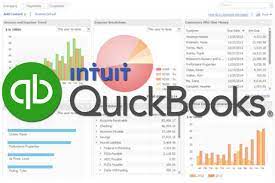Finance, accounting, and supply chain professionals use a wide range of words to talk about different parts of inventory management. When looking at the products a company sells each year, it can be important to have access to inventory cost techniques like the “last-in, first-out” method. Understanding this idea will make it easier for you to comprehend the potential applications of this valuation technique in the company. In this post, we will learn about LIFO, the working method, reserve, and benefits.
LIFO
Last-in, first-out, (LIFO) is the approach to inventory valuation that makes the assumption that the final products you add to your inventory will also be the first items to sell when an accounting year begins. This means you can use your company’s most recent inventory additions (COGS) to figure out your cost of goods sold. Then you can expense the most recent inventory expenditures first and keep the older inventory costs on your balance sheet.
How do we utilize the last-in, first-out method? Let us look into it and consider some reasons for using them as well.
How to Use LIFO
To employ the LIFO method, only adhere to the following steps:
#1. Consider your Choice
Make sure the LIFO approach is the best option for your business before choosing it. After filing for last-in, first-out, you cannot change your mind without the IRS’s approval. Although this can be a more complicated alternative, if your business needs it, it could result in increased savings. Your corporation should consult a business tax expert before making this choice since it might be a difficult process. Take a look at various approaches to discover which one would work best for your business strategy.
#2. Seek Permission
To choose the last-in, first-out approach, approval from the IRS is required. You can submit Form 970 to obtain this authorization. You can submit this form along with your tax return for the year that you begin using “last-in, first out”. Provide government tax and profit reporting details and how long you wish to use this accounting system here.
#3. Finish the Application.
To decide if you are permitted to use the last-in, first-out approach, the IRS makes a number of inquiries regarding your items. You advise last-in, first-out of the costing techniques you intend to utilize when you apply for it. The dollar-value approach, the inventory price index computation (IPIC) method and the specific goods method are a few examples of these.
Reasons to Use Last-in, First-out
For a number of reasons, LIFO may be used in accounting:
- Inflation: When your expenses for purchasing inventory or producing goods have been rising because of things like inflation, you might adopt the LIFO method.
- Taxes: Even while you could discover that using the inventory cost approach reduces your company’s profits, it also enables it to pay less corporate income tax.
- Savings: The LIFO approach might assist your business increase its savings if your inventory and manufacturing costs keep rising.
The market environment has a significant impact on when LIFO should be used. If prices remain stable, businesses might not need to employ this strategy.
LIFO Method
“Last-In, First-Out” is an abbreviation for LIFO. It is a technique used in the computation of the cost of goods sold to support cost flow assumptions. The LIFO approach is predicated on the idea that the most recent items added to a company’s inventory have already been sold. These current products’ purchase prices are the ones that were considered in the calculation.
Why Would You Use Last-in, First-out?
When the expenses of making a product or acquiring inventory have been rising, the COGS (Cost of Goods Sold) computation uses the last-in, first-out approach. Inflation may be to blame. Although a company’s profits may decline as a result of using the last-in, first-out accounting system, it may also result in a reduction in the amount of corporate tax due. These savings could be substantial for a corporation if the cost rises persist for a while.
Is Last-in, First-out Illegal?
Only within the United States and in accordance with GAAP’s regulations is last-in, first-out permitted to be employed. GAAP establishes accounting rules to make it simple to compare financial statements from one company to another. This implies that the rules are the same for all businesses. GAPP establishes guidelines for a wide range of subjects, including assets and liabilities, foreign exchange, and the presentation of financial statements.
Outside of the United States, the last-in, first-out approach is not permitted. The International Financial Reporting Standards Foundation’s guidelines must be adhered to by many nations, including Canada, India, and Russia. A framework for internationally recognized accounting standards is provided by the IFRS. The IFRS is seen as being more “principles-based,” whereas GAAP is seen as being more “rules-based,” despite the fact that the two sets of standards differ greatly.
Why Is Last-in, First-out Preferable to FIFO?
Perhaps not. It mostly relies on the state of the market. American companies like the LIFO method because it could help them save money on taxes if the costs of buying or making goods are going up. The last-in, first-out method, on the other hand, makes keeping the books much harder because existing models may never leave the inventory. As production costs increase, the value of that inventory will likewise be overstated.
Furthermore, the last-in, first-out approach might not accurately reflect the price a corporation actually paid for a product. This is so that inventory totals, rather than tracking physical goods, can be tracked using the last-in, first-out approach. In the COGS (cost of goods sold) calculation, an organization can therefore theoretically sell older goods while using more recent pricing for their acquisition or production. This indicates that the COGS figure generated is inaccurate.
LIFO Benefits
We will be looking into the various benefits and demerits of Lifo. First, we will start with the benefits of LIFO.
Benefits of LIFO
Given the following benefits, LIFO is widely used by businesses worldwide:
#1. LIFO Compares the Most Recent Costs with the Most Recent Revenues
By comparing the most recent costs with current revenues, the LIFO method offers a more accurate calculation of current earnings. The non-LIFO approaches (like the FIFO method) compare historical expenditures to recent revenues. Inventory profit (also known as “paper profit” or “transitory profit”) is produced when previous costs are compared to current revenues in an inflationary environment. When the replacement cost of the inventory is higher than the inventory cost when compared to revenues, inventory profit results. This inventory profit overstates profit and downplays the cost of goods sold (COGS).
#2. Tax Advantages and an Increase in Cash Flows
One of the benefits of the last-in, first-out (LIFO) inventory valuation approach is in terms of taxes. When last-in, first-out is used during times of high inflation, existing purchases made at higher prices are paired with revenues that help reduce the overstatement of profit. This lowers the amount of income tax that needs to be paid. The company’s cash flows improved as a result of the income tax cut.
#3. Last-in, First-out Reduces Write-Downs to Market
A corporation that implements LIFO is less likely to see its net income impacted by future price declines. Since the most recent inventory purchased at the highest price is sold first, companies adopting the LIFO method typically do not have much inventory at the current higher prices. Therefore, with LIFO, the likelihood of future write-downs to market owing to a fall in inventory prices is reduced or even eliminated.
#4. Physical Flow of Inventory
In some circumstances, the LIFO cost flow and the real flow of inventory are identical. For instance, the coal that was most recently added to a stack is always on top of the pile of coal. As a result, the last coal always comes out first. Due to the rarity of scenarios where the physical flow of inventory matches the LIFO cost flow, this benefit is not the main driver of the LIFO method’s popularity. The key justifications for the extensive application of this strategy are the advantages 1, 2, and 3 mentioned above.
Negative Aspects of the Last-in, First-out (LIFO) Method:
The following list outlines the main disadvantages of utilizing LIFO as an inventory costing method:
#1. Earnings Decline During Inflationary Periods
The LIFO mechanism lowers reported earnings during inflationary periods. Because many investors might not be able to understand the effects of LIFO and inflation on the reported earnings, many companies worry that an accounting change to LIFO will have a negative impact on investors and will lower the price of the company’s shares.
#2. Inventory Understatement
Because the LIFO method bases its calculations on the oldest expenses, the balance sheet inventory value is typically overstated. Inventory understatement might make the working capital situation appear worse than it is.
#3. The Last-in, First-out Liquidation Issue
The last-in, first-out liquidation may cause the declared earnings for a given period to be inflated, which would raise the period’s tax obligations. A business may make bulk purchases of goods with the goal of matching them against sales in order to prevent this issue. As a result, the implementation of last-in, first-out could lead to bad purchasing practices among businesses.
#4. Income Manipulation
By altering its purchasing behavior at the end of the year, a corporation adopting the last-in, first-out strategy can easily influence its reported results for a period.
LIFO vs FIFO
The two most popular methodologies for valuing inventory are FIFO and LIFO. First in, first out, or FIFO, is the theory that the first things added to your inventory will also be the first ones to sell. The “last in, first out” (LIFO) principle believes that the most recent things added to your inventory will be the ones to sell. The method you use for inventory valuation will rely on your tax status, inventory flow, and recordkeeping needs.
Let us go straight to see what each other means and how it works.
What is FIFO, and How Does it Work?
First-in, first-out businesses value their inventory with the presumption that the first products they create or buy should also be the first products they sell. Businesses utilizing FIFO are thought to be more profitable – at least on paper – due to economic swings and the risk that the cost of producing items may increase over time. The FIFO inventory valuation method is frequently used by businesses that sell perishable goods or units vulnerable to obsolescence, such as food products or designer clothing. Until the additional tax liability is taken into account, FIFO is the perfect valuation method for companies that need to impress investors. FIFO reports a greater level of pretax earnings since it leads to a lower recorded cost per unit. Additionally, as profits rise, taxes for businesses will also rise.
How to Calculate FIFO
According to Stephanie Ng, a CPA and the creator of the website I Pass the CPA Exam, you should start by figuring out the cost of your oldest inventory in order to determine the cost of goods sold (COGS) under FIFO. To calculate the costs related to the sale of goods using FIFO, multiply this cost by the quantity of inventory sold.
We’ll concentrate on periodic FIFO for the purposes of this computation and the ones that come after. Here is a formula example from Ng:
Beginning inventory + Purchases = Goods available for sale – Ending inventory = Cost of goods sold
What is LIFO, and How Does it Work?
The cost of goods sold is calculated using current pricing rather than the price you paid for the inventory that is currently on hand under the latest in, first out inventory technique. The cost of items sold will be higher if the price of the goods has increased after the first purchase, which will lower earnings and tax obligations. Nonperishable goods (such as metals, chemicals, and petroleum) are typically subject to LIFO accounting when it is permitted.
The reduced tax burden is a major factor in why some businesses favor LIFO. LIFO results in lower net income because the cost of items sold is higher.
This is what LIFO implies, and many businesses want it because it results in less taxation and less profit reporting.
How to Calculate LIFO
We provided a LIFO calculation formula. For this formula and the ones that follow, periodic LIFO will once more be the main focus. Ng asserts that a large portion of the procedure, including this fundamental formula, is similar to FIFO. She pointed out that variances arise when deciding which products to claim you sold.
Beginning inventory + Purchases = Goods available for sale – Ending inventory = Cost of goods sold
Restrictions on the Use of LIFO
International Financial Reporting Standards (IFRS), a set of uniform guidelines for accountants who operate globally, forbid LIFO. Although many countries already use IFRS, the United States still follows generally accepted accounting rules (GAAP). By outlawing LIFO, the United States would remove a barrier to implementing IFRS and simplify accounting for multinational firms.
However, U.S.-based businesses that utilize LIFO are required to change their statements to FIFO in their financial statement footnotes due to the existing disparity. The “LIFO reserve” refers to this variation. It is calculated using both the LIFO and FIFO cost of goods sold. This makes LIFO and FIFO enterprises more comparable.
International and American standards are generally moving away from LIFO. The majority of American-based businesses now use FIFO. Some businesses still manage their inventories using LIFO in the US, but when it comes to tax filing, they switch to FIFO. Only a select few sizable businesses in the US are still able to declare taxes using LIFO.
LIFO Reserve
A LIFO reserve serves as a counter account, i.e., a ledger account in use for inventory reasons that contrasts the two main methods of valuing inventory: FIFO and LIFO (last in, first out) (first in, first out). A contra account displays other ledger accounts’ opposing balances. A counter inventory account that highlights the difference between the LIFO and FIFO computations of inventory costs is the LIFO reserve account.
Relevance of the LIFO Reserve
As was mentioned above, a corporation needs a LIFO reserve since it clarifies any discrepancies between the LIFO and FIFO accounting techniques. Or to put it another way, the LIFO reserve is important because it eventually provides the most accurate and comprehensive picture of a company’s inventory, sales, income, and profits.
The expenses of the commodities the company has sold throughout the year are then increased or decreased depending on the LIFO reserve account balance. Consequently, less profit is reported as a result. Investors need this information because it helps them to assess the impact of inflation on the value of the company’s inventory or to assess the tax advantages of utilizing the LIFO or FIFO accounting techniques.
The simplest definition of the LIFO reserve is that it is used to adjust for the discrepancies between the LIFO and FIFO methods of valuing inventories. The relevance of the LIFO reserve and its significance to a firm, its shareholders, the government, and present or potential investors cannot be understated because it serves as a crucial statement of the company’s financial balance.
What is the Purpose of a LIFO reserve?
In order to close the distinction between the FIFO and LIFO techniques of inventory valuation, there is an account called the LIFO reserve. The reserve shows how either strategy would impact the company’s COGS (Cost of Goods Sold) in several scenarios in addition to outlining the substantial differences between the two approaches.
What is Last-in, First-out Used?
The last in, first out (LIFO) method of inventory accounting is utilized. According to last-in, first-out, expenses are deducted starting with the expenditures of the most recent goods that were bought (or produced). Only in the United States is last-in, first-out practiced, and it is governed by generally accepted accounting rules (GAAP).
Why is Last-in, First-out no Longer Used?
Due to the potential for distortions in a company’s profitability and financial statements, IFRS forbids LIFO.
What is Last-in, First-out and its Advantages?
The majority of the time, LIFO will lead to lower closing inventories and higher COGS. In contrast, FIFO results in a larger closing inventory and lower COGS. Businesses with large inventories tend to prefer LIFO because it allows them to benefit from larger cash flows and lower taxes while prices are rising.
What is the Last-in, First-out Method Formula?
Calculate your most current inventory’s cost, then multiply it by the number of goods sold.
What is a Disadvantage of LIFO?
Because older inventory may not be moved or sold, LIFO might be more challenging to maintain than FIFO. Because unsold inventory expenses do not exit the accounting system, LIFO also leads to more complicated records and accounting procedures.
Why LIFO is Better than FIFO?
Companies may find it advantageous to employ LIFO cost accounting over FIFO when prices are rising. In the event of rising prices, LIFO enables businesses to better match their revenue to their most recent costs while also saving on taxes.
Related Articles
- IFRS (International Financial Reporting Standards) List, Requirements, Compliance & Benefits
- GAAP vs IFRS: Revenue Recognition, Balance Sheet & Other Differences
- HOW TO CALCULATE COST OF GOODS SOLD: Definition & Formula
- BEST APPS FOR INVENTORY MANAGEMENT IN 2023
- HOW DO BANKS MAKE MONEY: All You Need To Know






